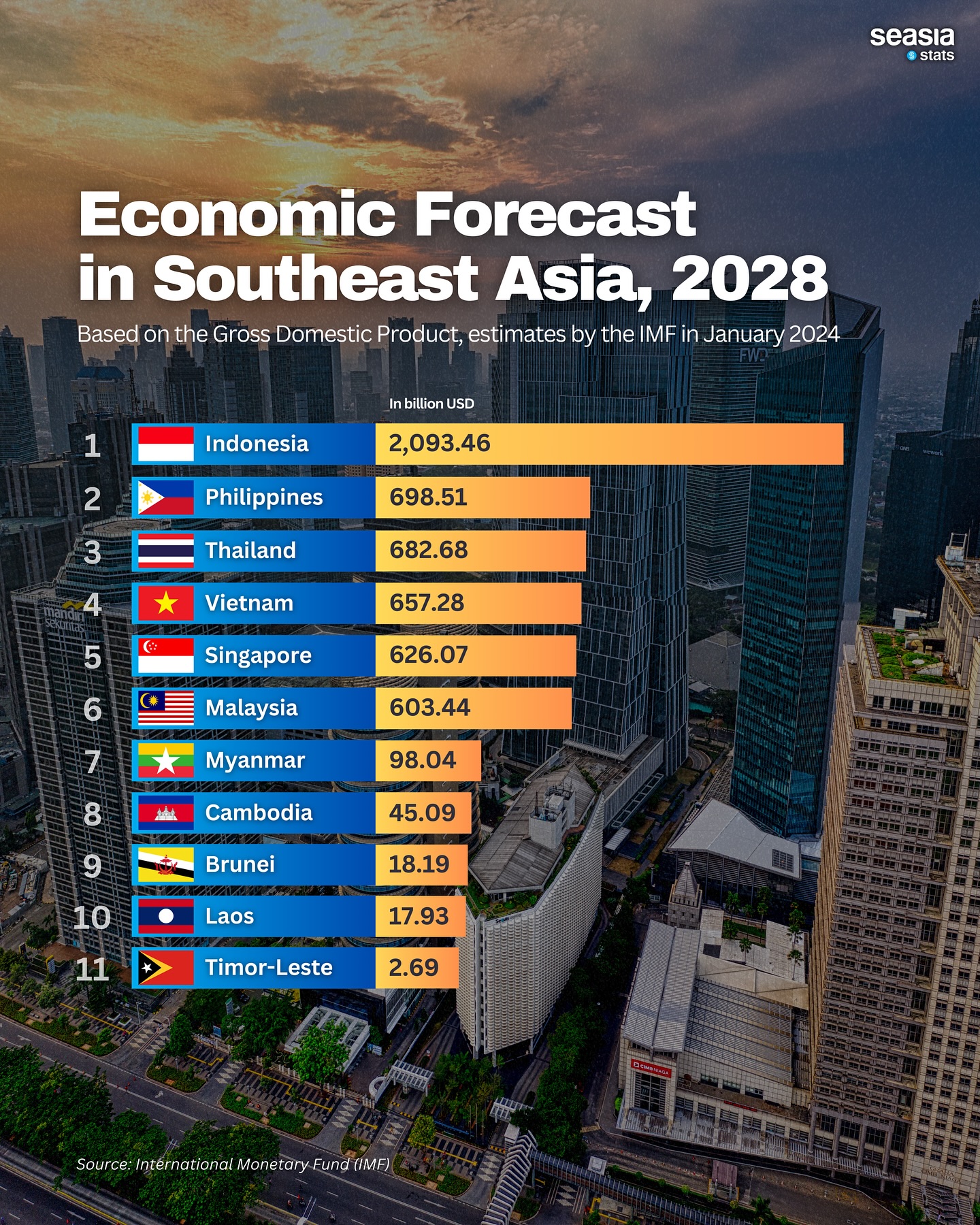The International Monetary Fund (IMF) has released its latest economic forecasts for Southeast Asia, projecting the Gross Domestic Product (GDP) for the year 2028. These estimates, published in January 2024, offer a glimpse into the expected economic performance of various countries within the region, providing valuable insights for investors, policymakers, and businesses.
Indonesia is anticipated to lead the region with the highest GDP, estimated at $2,093.46 billion. This projection reflects Indonesia's ongoing economic expansion and its significant role as a major economy in Southeast Asia. The country’s large population, growing industrial base, and strategic location contribute to its robust economic outlook.
The Philippines follows with a forecasted GDP of $698.51 billion. The Philippine economy has been experiencing steady growth driven by strong domestic consumption, a burgeoning services sector, and remittances from overseas workers. The projected figure underscores the country's growing economic influence in the region.
Thailand, with its diverse economy and significant tourism sector, is expected to have a GDP of $682.68 billion by 2028. Despite recent challenges, Thailand’s economic resilience and strategic initiatives aimed at bolstering its industries continue to drive its growth prospects.
Viet Nam is projected to reach a GDP of $657.28 billion. Viet Nam's rapid economic development, driven by manufacturing, exports, and foreign direct investment, positions it as one of the fastest-growing economies in the region. Its economic reforms and strategic trade agreements contribute to its positive outlook.
Singapore, known for its global financial hub and high standard of living, is forecasted to have a GDP of $626.07 billion. The city-state's advanced infrastructure, favorable business environment, and strong international trade connections underpin its economic stability and growth.
Malaysia is expected to achieve a GDP of $603.44 billion. Malaysia's economy benefits from its diverse industrial base, including electronics, automotive, and natural resources. Continued investments and economic reforms are likely to support its growth trajectory.
Myanmar is projected to have a GDP of $98.04 billion. Despite facing political and economic challenges, Myanmar's potential for growth remains significant, particularly in sectors such as agriculture and natural resources.
Cambodia is estimated to reach a GDP of $45.09 billion. The country’s economic growth is supported by its garment industry, tourism, and infrastructure development, contributing to its overall economic progress.
Brunei Darussalam is expected to have a GDP of $18.19 billion. As a small but wealthy nation with substantial oil and gas reserves, Brunei’s economic outlook remains positive, albeit at a smaller scale compared to its regional counterparts.
Laos is forecasted to achieve a GDP of $17.93 billion. Laos' economic development is driven by infrastructure projects and investments in hydropower, although it remains one of the smaller economies in the region.
Timor-Leste is projected to have a GDP of $2.69 billion. The youngest nation in Southeast Asia continues to develop its economic framework, with ongoing efforts to enhance infrastructure and governance.
These projections highlight the diverse economic landscape of Southeast Asia, with each country exhibiting unique strengths and challenges. The IMF's estimates provide a snapshot of the region's economic potential and underscore the importance of continued investment, policy reform, and strategic planning to sustain and enhance growth.
As Southeast Asia continues to evolve, these economic forecasts will be crucial for understanding the region's future trajectory and for making informed decisions in the realms of business and economic policy.



















